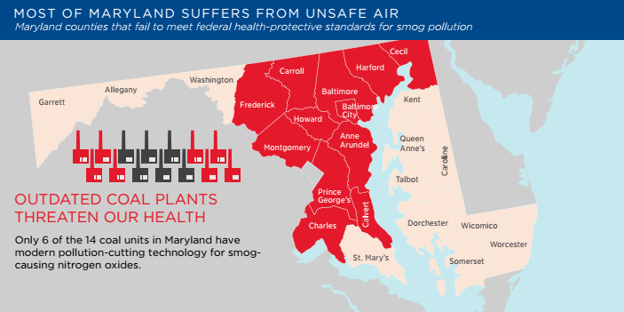by Thornton Mattheson
September 11, 2019. Matt Dernoga, Sierra Club’s Beyond Coal Representative, addressed the Greenbelt Climate Action Committee on the need to phase out Maryland’s 6 remaining coal plants. Burning coal not only releases carbon dioxide that contributes to global warming; it also causes significant local air and water pollution. For example, the Crane and Wagner plants in Baltimore, which lack modern emission controls, exceed EPA standards for sulfur dioxide emissions that contribute to high rates of asthma and other respiratory diseases in the area. The Brandywine coal plant and landfill in southern Prince George’s county also regularly violate water emission standards. Since coal plants tend to be located in lower-income communities, they disproportionately impact African American populations.
Maryland continues to make progress in terms of greener energy. Electricity generation from coal has fallen by 60 percent since 2010 and now accounts for less energy than renewables. (However, reduced generation from coal is often replaced by natural gas, which though much cleaner than coal in terms of local air pollution still generates carbon emissions.) Also, the State Assembly earlier this year passed the Maryland Clean Energy Jobs Act, which sets a goal of generating at least 50 percent of energy from renewables by 2030.
The Maryland Sierra Club is seeking a commitment from the state legislature to retire the remaining six coal-fired plants by 2025 while providing transitional support for power plant-dependent communities. Models for this development include Washington and New York states. In New York, transitional funds for coal plant communities came from the Regional Greenhouse Gas Initiative (RGGI) cap-and-trade system operating in the northeast and mid-Atlantic region. Maryland should also receive RGGI for funds for this purpose.

Learn more about the Maryland Beyond Coal Movement here: https://content.sierraclub.org/coal/maryland/about